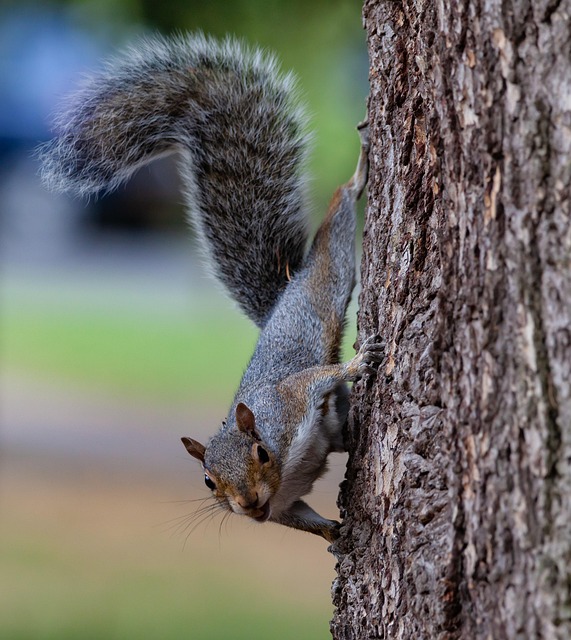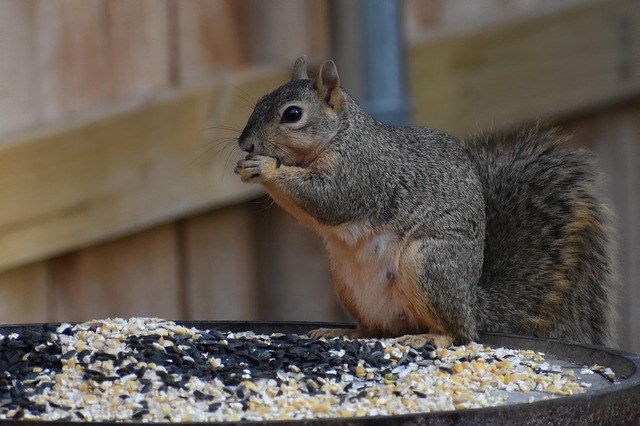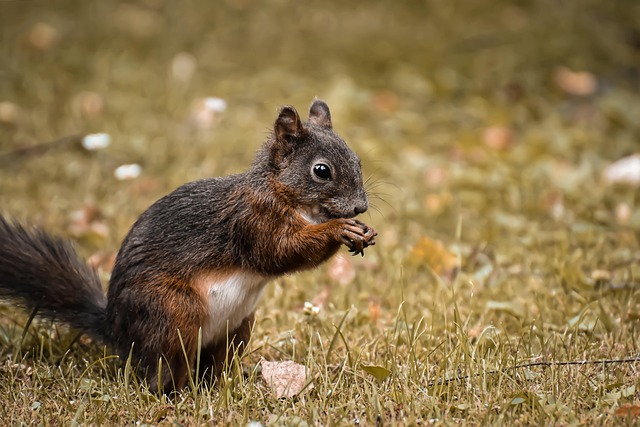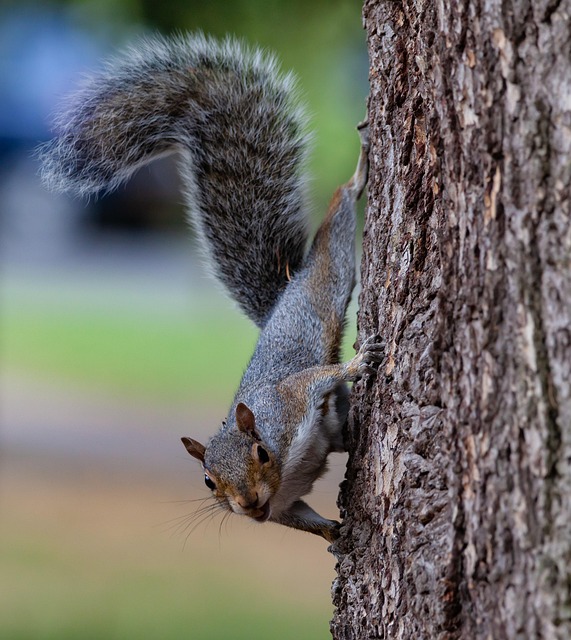Sealing Out Squirrels: Comprehensive Residential Treatment Guide

Residential squirrel treatment requires a multi-step strategy focusing on prevention and control. Th…….
Understanding Squirrels Control Services
Squirrels control services encompass a range of practices aimed at managing populations of squirrels, particularly those that may become invasive or pose a threat to ecosystems, agriculture, or public health. These services include monitoring squirrel populations, implementing biological control measures, and providing education on coexisting with these animals. The core components of squirrels control services involve non-lethal methods such as habitat modification, sterilization programs, and the use of one-way doors to allow squirrels to leave but prevent them from re-entering areas where their presence is not desired. Historically, control measures have evolved from lethal methods like hunting and trapping to more humane and sustainable practices that prioritize coexistence with these rodents.
Global Impact and Trends
The impact of squirrels control services is felt globally, as various species of squirrels have adapted to different environments, sometimes becoming invasive pests. Key trends in this field include the shift towards non-lethal control methods, increased public awareness campaigns, and the development of integrated pest management (IPM) strategies that consider both ecological balance and human needs. In regions like North America, Europe, and parts of Asia, the focus is on preventing the spread of invasive species like the Eastern gray squirrel and the Japanese flying squirrel. In contrast, other areas may prioritize conservation efforts for native species or address the challenges posed by rodent-borne diseases.
Economic Considerations
The economic aspects of squirrels control services are multifaceted. Market dynamics in this sector reflect the balance between cost-effective and sustainable solutions versus the immediate need to mitigate damage caused by squirrels. Investment patterns often follow research into effective control measures, which can lead to technological advancements and more efficient service provision. In economic terms, squirrels control services contribute to agricultural yield protection, infrastructure preservation, and public health maintenance. Moreover, these services support the recreational value of natural areas by ensuring that visitors can enjoy their surroundings without significant interference from squirrel populations.
Technological Advancements
Technological advancements have significantly influenced squirrels control services. Innovations such as advanced tracking and monitoring devices, non-lethal repellents, and genetic studies to understand population dynamics better have all contributed to more effective management practices. The future potential of technology in this field includes the use of AI for predictive modeling of squirrel movements and drones for precise application of repellents or vaccines. These advancements aim to minimize harm to both ecosystems and the squirrels themselves while effectively controlling populations where necessary.
Policy and Regulation
The governance of squirrels control services is guided by a mix of national, regional, and local policies and regulations. Legislation often aims to protect endangered species while managing invasive ones. The legislative framework includes permits for control activities, guidelines for humane treatment, and regulations on the use of substances for population management. These policies are critical in shaping the development of squirrels control services and ensuring they align with broader conservation objectives and public safety standards.
Challenges and Criticisms
Challenges faced by squirrels control services include public resistance to lethal methods, ethical concerns regarding animal welfare, and the need for scientifically sound practices that are both effective and sustainable. Critics argue that some control measures may inadvertently affect non-target species or disrupt ecological balance. To address these issues, stakeholders must engage in collaborative efforts, including interdisciplinary research, community involvement, and policy reforms that promote humane and environmentally responsible practices.
Case Studies
Several case studies highlight the successful application of squirrels control services. For instance, in urban areas like New York City, integrated strategies have effectively managed the gray squirrel population without causing undue harm. In agricultural settings, combining habitat modification with sterilization programs has significantly reduced crop damage. These case studies provide valuable insights into the practical application of control measures and underscore the importance of tailoring solutions to specific locales and situations.
Future Prospects
Looking ahead, squirrels control services are expected to evolve with ongoing research, technological innovation, and changing societal values. Potential growth areas include the development of new non-lethal methods, public education campaigns, and enhanced collaborations between conservationists, scientists, and policymakers. Emerging trends point to a greater emphasis on habitat restoration and the role of squirrels within ecosystems. Strategic considerations will focus on ensuring that control measures are adaptable to different contexts and sensitive to the ethical and welfare concerns of animal lovers and conservationists.
Conclusion
Squirrels control services play a crucial role in balancing human needs with the health of wildlife populations. This article has explored various aspects of these services, from their historical context to future prospects, highlighting their significance in managing squirrel populations sustainably. By understanding and addressing the challenges faced by this field, we can ensure that squirrels control services continue to evolve and meet the needs of both humans and wildlife.
FAQ Section
What are squirrels control services?
Squirrels control services are a suite of practices designed to manage squirrel populations, including both lethal and non-lethal methods, to protect human interests while maintaining ecological balance.
Why is it important to control squirrel populations?
Controlling squirrel populations can prevent damage to crops, infrastructure, and personal property, as well as mitigate the risk of rodent-borne diseases. It also ensures that ecosystems remain healthy and biodiverse.
Are there any humane methods for controlling squirrel populations?
Yes, many humane methods are employed, such as non-lethal repellents, birth control vaccines, and habitat modification to make areas less attractive or accessible to squirrels.
How do technologies like AI and drones contribute to squirrels control services?
Technologies like AI can analyze data for predicting squirrel movements and optimizing control efforts, while drones can precisely deliver repellents or vaccines without causing harm.
What role do policies play in squirrels control services?
Policies regulate the methods used for controlling squirrel populations, ensuring that they are legal, humane, and sustainable. They also guide conservation efforts and public education campaigns.
This FAQ section provides a snapshot of common questions about squirrels control services, offering readers a clear understanding of this complex field.

Residential squirrel treatment requires a multi-step strategy focusing on prevention and control. Th…….

Squirrels, attracted by bird feeders, can turn peaceful gardens into chaotic scenes. While deterring…….

Squirrels, with their agility and curiosity, often get trapped in structures due to their exploratio…….

Understanding squirrel behavior is key to effective, eco-friendly commercial squirrel removal strate…….

Squirrel infestations in homes require professional intervention for effective long-term solutions……..

Squirrels are adept intruders, gaining access to homes through small openings, attics, chimneys, and…….